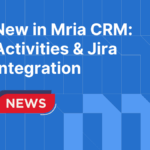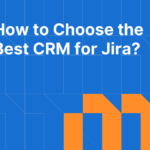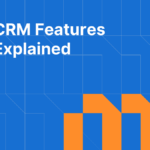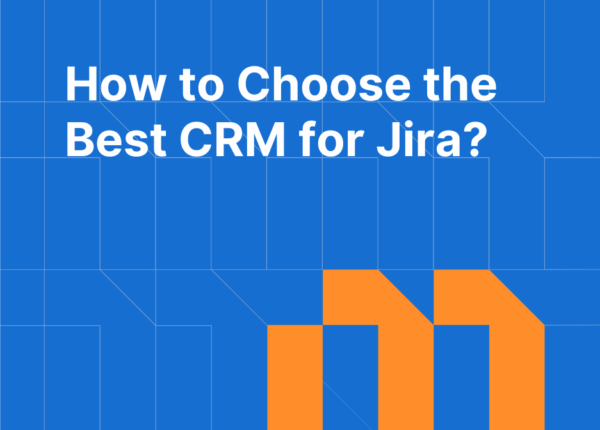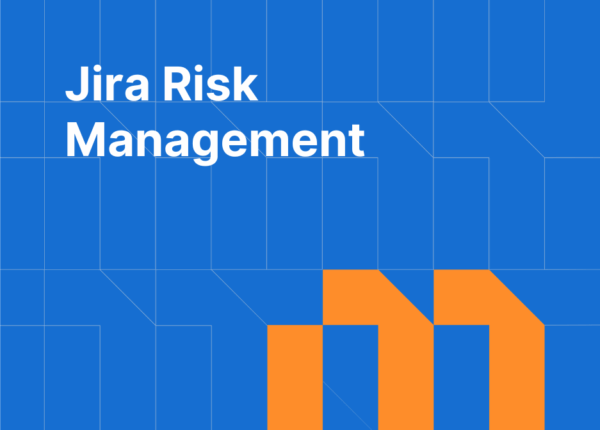Choosing the right Customer Relationship Management (CRM) system is one of the most impactful decisions for your business. The CRM you select will influence how your sales, marketing, and customer service teams operate, how you manage relationships, and ultimately, how your business grows. But with many options on the market, figuring out how to choose a CRM system that fits your unique needs is challenging.
This article offers deep strategic guidance on how to choose the right CRM software. It moves beyond surface-level advice and focuses on aligning your CRM choice with your business model, user behavior, integrations, vendor stability, and growth plans. Whether you are a small business or part of a larger B2B organization, this framework will help you make a well-informed, future-proof decision.

Table of Contents
Understand Your Business and Customer Needs
Before diving into the technical details of CRM software, it’s crucial to take a step back and thoroughly understand your business’s unique context. Every company operates differently, from how it generates revenue to the way it interacts with customers at various stages. Knowing your business model and customer journey inside out forms the foundation for selecting a CRM that truly fits your needs.
This initial clarity helps you avoid common mistakes, such as choosing a CRM packed with features irrelevant to your workflows or one that complicates processes instead of simplifying them. By grounding your CRM choice in your business realities, you set yourself up for better adoption, smoother implementation, and ultimately, more impactful results.
If you’re still questioning whether your business truly needs a CRM, check out our article Why Use a CRM? Straight Answers to Common Questions.
Define Your Business Model and Customer Journey
Before considering which CRM to choose, clarify your business model and the customer journey your CRM must support.
- Customer type and complexity: B2B companies often require managing multiple contacts per account, tracking complex sales cycles, and managing numerous deal stages. In contrast, B2C or small businesses may need simpler pipelines and faster lead-to-sale processes.
- Sales process length and stages: Understand the typical length of your sales cycle and the stages leads go through before closing. CRMs differ in their ability to model complex pipelines or handle simple funnels efficiently.
- Customer journey touchpoints: Map the entire customer journey from first contact through sales, onboarding, support, and renewal. A CRM that supports multiple departments and touchpoints provides a unified customer view and better relationship management.
- Subscription-based models: If your business operates on recurring revenue or SaaS subscriptions, your CRM needs to support tracking subscription lifecycles, renewal dates, and churn indicators alongside traditional sales stages.
Having a clear, documented understanding of your business model and customer interactions helps you prioritize CRM features and workflows that align precisely with your needs.
For a deeper breakdown of how customer journeys align with CRM workflows, read our complete guide to the Customer Relationship Management process.
Consider Your Company Culture and Sales Approach
Your CRM should complement your company’s culture and the way your sales and service teams work.
- Sales style: Does your team prioritize relationship-building and consultative selling, or focus on high-volume outbound activities? Some CRMs are optimized for detailed activity tracking and notes, others for automation and volume.
- Team structure: Centralized sales teams need different permissions and collaboration features compared to distributed or field teams.
- User autonomy: Determine how much control individual users should have over customizing views, reports, and processes.
- Business model: Different business models—whether product-focused, service-oriented, or subscription-based—require CRMs that support the unique workflows, customer engagement strategies, and collaboration styles relevant to their approach.
Aligning CRM capabilities with your company’s culture, business model and workflows improves adoption and effectiveness.
Key CRM Features and Capabilities to Consider
When deciding how to choose the best CRM software, understanding the features that impact your business is essential. Features are not just “nice-to-haves”; they determine how well your CRM supports your sales processes, team collaboration, and customer experience. Below is a detailed look at essential and advanced features and guidance on prioritizing them based on your needs.
Essential CRM Features for Every Business
- Contact and Lead Management
At its core, a CRM is a centralized database that stores customer and prospect information. This includes contact details, interaction history, segmentation, and lead qualification status. Effective lead management enables your team to prioritize prospects and personalize outreach. - Companies/Accounts Management
Managing customer organizations (companies or accounts) alongside individual contacts is crucial for B2B businesses. This feature allows you to track relationships between multiple contacts, deals, and activities linked to the same company, providing a holistic view of your business customers. - Sales Pipeline and Deal Tracking
Visualizing your sales pipeline with defined stages allows you to track deals through each phase, forecast revenue, and identify bottlenecks. A good CRM provides flexible pipeline management to match your unique sales process. Read our guide on what a sales pipeline is, with definitions, examples, and benefits. - Activity Management and Task Automation
Scheduling follow-ups, reminders, and automating routine tasks like email sequencing or data entry saves time and ensures no lead or customer falls through the cracks. Automation increases productivity and standardizes workflows. - Reporting and Analytics
Customizable dashboards and detailed reports help you measure KPIs such as conversion rates, deal velocity, and sales team performance. Insightful analytics empower data-driven decisions and continuous improvement. - Security and Compliance Tools
Depending on your industry, data privacy is crucial. Features like encryption, granular access controls, audit logs, and compliance certifications (e.g., GDPR, HIPAA) protect sensitive customer information and maintain trust.
Want to explore CRM features in more depth? Check out our article on CRM features explained – from basic tools to industry-specific solutions.
Advanced Features for Complex Needs
- Customization and Workflow Automation
Beyond basic fields and processes, advanced CRMs let you create custom data fields, automate multi-step workflows, trigger alerts based on behavior, and set role-based permissions. This level of flexibility allows your CRM to truly mirror your business operations. - Multi-Channel Communication Tracking
Modern CRMs integrate with email, phone systems, social media, and live chat tools, providing a unified timeline of all customer interactions. This holistic view improves communication quality and coordination across teams. - Integration Ecosystem
A CRM is more powerful when it seamlessly connects to your marketing automation, ERP, accounting, support platforms, and other critical systems. Open APIs or native integrations prevent data silos and duplication. - Subscription and recurring revenue tracking
For product companies, the ability to monitor subscription statuses, renewal schedules, and billing integrations is critical for sales and customer success alignment. - Customer success and product engagement integration
Some CRMs integrate with support ticketing, usage analytics, and customer feedback tools to provide a comprehensive view of customer health and product adoption, enabling proactive retention and upselling. - Mobile Access and Offline Functionality
Field sales and remote teams require reliable mobile apps with offline capabilities to update customer data anytime, anywhere, ensuring continuity and accuracy. - AI and Predictive Analytics
Leading CRMs now offer AI-driven capabilities such as lead scoring, deal prioritization, churn prediction, and personalized recommendations. These features enable proactive selling and smarter resource allocation.
How to Prioritize Features Based on Your Business
- Small businesses and startups often need core features that are easy to use and affordable. Focus on contact management, simple pipelines, basic automation, and straightforward reporting. Overly complex systems can slow adoption.
- B2B companies with long, multi-stage sales cycles require robust customization, detailed pipeline management, and integrations with ERP or marketing automation to align all teams and processes.
- Customer service and support-focused businesses should emphasize multi-channel communication tracking, ticketing, SLA management, and knowledge base integration to enhance customer satisfaction.
Look Beyond Features When Choosing a CRM
While features are important, choosing a CRM is about more than just ticking off a list of functionalities. The true value of a CRM lies in how well it integrates with your existing systems and supports the flow of data across your organization. Seamless data flow and solid integration reduce manual work, improve data accuracy, and help teams collaborate more effectively.
Consider Integration and Workflow Unity
A CRM rarely operates in isolation. Think of it as a hub in your broader technology ecosystem.
- Integration with existing tools: Ensure the CRM can connect with your email, marketing automation, ERP, accounting, and project management systems. Strong native integrations or APIs reduce duplicate data entry and errors.
- Native ecosystem alignment: For teams already using Jira, choosing a CRM like Mria CRM, built natively inside Jira, means your sales, service, and project teams work in a unified environment. This eliminates the need for complicated data syncing and reduces context switching, boosting efficiency and data accuracy.
- Data synchronization and governance: Evaluate how data flows between systems. Real-time, two-way sync keeps customer information accurate and accessible across platforms.
- Security and compliance: Understand how the CRM protects your data and supports industry regulations like GDPR or HIPAA.
- Billing and product analytics integration: Product companies benefit from CRMs that connect seamlessly with subscription billing platforms and product usage analytics. This integrated data flow supports proactive account management and reduces churn.
Prioritizing integration capabilities ensures your CRM supports smooth, efficient operations across your business.
Balance Customization and Usability
While customization allows tailoring the CRM to your workflows, it can introduce complexity.
- Meaningful customization: Choose CRMs that let you add custom fields, workflows, and automations without requiring extensive developer resources.
- User-friendly design: A clean, intuitive interface helps users adopt the system quickly and reduces training costs.
- Configurability over complexity: Favor CRMs that allow configuration through simple settings or drag-and-drop tools rather than coding.
Striking the right balance reduces frustration and maximizes the CRM’s positive impact.
How to Choose the Right CRM Software for Adoption and Growth
When selecting a CRM, prioritize solutions that foster seamless adoption and support long-term growth through unified, simple systems. Consider these critical factors:
- Intuitive User Interface: Choose CRM software with a clean, user-friendly design that aligns with how your team naturally works. A straightforward interface reduces training time and drives consistent use.
- Configurable Workflows Without Complexity: Look for platforms that allow you to tailor processes easily without requiring technical expertise or heavy customization. Flexibility should enhance, not complicate, user experience.
- Unified Systems and Native Integrations: Favor CRMs that integrate deeply and natively with your existing tools and workflows, minimizing manual syncing, duplication, and technical overhead. Unified platforms streamline collaboration and data accuracy.
- Comprehensive Mobile Access: Ensure the CRM supports full functionality on mobile devices to accommodate remote and field teams, maintaining productivity anytime, anywhere.
- Strong Onboarding and Support: Select vendors with extensive training resources and responsive support to guide your team through adoption phases effectively.
- Performance and Scalability: Verify that the CRM maintains speed and reliability as your user base and data grow, ensuring smooth operations without disruption.
- Built-In Change Management Features: Features such as role-based permissions, in-app guidance, and configurable user access help manage adoption and encourage proper usage.
By focusing on unified, user-friendly CRM solutions with seamless integrations, you improve the chances of broad user adoption and create a platform that scales smoothly with your business.
How to Evaluate CRM Vendors
Evaluating CRM vendors is a critical step in your selection process. The stability and vision of the vendor impact not only your initial implementation but also the long-term success of your CRM investment.
This section covers key factors to assess, including the vendor’s financial health, reputation, and product roadmap to ensure they can support your evolving business needs.
Check Vendor Stability and Product Roadmap
Your CRM vendor is a strategic partner.
- Company reputation: Research the vendor’s history, financial health, and customer retention.
- Product development: Ensure their roadmap aligns with your business needs and technology trends like AI or automation.
- Customer support: Evaluate responsiveness, support channels, and availability of resources like documentation and training.
Partnering with a stable, innovative vendor reduces risks and helps future-proof your CRM.
Consider Vendor Ecosystem and Support
A vibrant vendor ecosystem enhances your CRM’s value.
- Community and training: Active user communities, training materials, and user groups facilitate knowledge sharing.
- Consulting and implementation partners: Certified experts can support smooth deployment and customization.
- Active user community: Engaged user groups and forums provide valuable peer support, shared best practices, and insights that can improve your CRM experience.
This ecosystem often makes the difference between CRM success and struggle.
How to Choose a CRM System Step-by-Step
To make an informed CRM decision, it helps to approach the selection systematically. Comparing options using a structured method ensures you evaluate all important factors objectively rather than relying on impressions or sales pitches.
Use a Scoring System to Compare Options
Develop a weighted checklist including:
- Fit with business processes and customer types
- Feature completeness and usability
- Integration capability
- Vendor reputation and support quality
- Cost and scalability
Score each CRM objectively to guide your decision.
Plan Your Budget Beyond Licensing Fees
Consider the total cost of ownership:
- Implementation and data migration
- Training and onboarding
- Customization and consulting
- Ongoing maintenance and support
- Productivity impact during transition
A realistic budget aligned with expected ROI avoids surprises.
Run Pilot Tests Before Full Deployment
Test your shortlisted CRMs with real users and data:
- Validate key workflows and integrations
- Gather user feedback on experience and ease of use
- Measure impact on efficiency and data quality
Pilot testing minimizes risks and improves chances of success.
How to Choose a CRM: Practical Checklist
Choosing the right CRM can feel overwhelming given all the factors involved. To simplify this process, the following checklist breaks down the critical elements you need to evaluate. Use it as a hands-on guide to systematically compare options, identify your priorities, and make a confident, well-informed decision.
Use this checklist to guide your evaluation and decision-making process when choosing a CRM system:
1. Business Alignment
- Have you documented your business model and sales process complexity?
- Does the CRM support your customer journey end to end (lead, sale, service)?
- Does it fit your company culture and sales approach?
2. Core Features and Usability
- Does the CRM offer robust contact, company and lead management?
- Are pipeline and deal tracking features customizable to your needs?
- Is the user interface intuitive and easy to learn?
- Can users customize views and workflows without technical help?
3. Integration and Workflow Unity
- Does the CRM provide a unified system with native integration to minimize the need for multiple third-party add-ons?
- Does it streamline workflows across your core business platforms without complex custom integrations?
- Does the CRM help avoid extra costs and complexity associated with multiple integrations?
4. Vendor Stability and Support
- Is the vendor financially stable with a strong market presence?
- Does their product roadmap align with your future needs?
- What support channels and resources do they offer (training, helpdesk, community)?
- Is there a healthy ecosystem of certified partners?
5. User Adoption
- Have you involved end-users in the evaluation process?
- Does the CRM support mobile and remote work?
- Is there a clear training and onboarding plan?
6. Scalability and Flexibility
- Can the CRM scale with your user count and data growth?
- Is it flexible enough to adapt to changing business models?
- Does it offer open APIs or data export options to avoid lock-in?
- Does the CRM offer a unified platform experience that simplifies expansion and reduces complexity as your business scales?
7. Budget and Total Cost
- Have you accounted for licensing, setup, migration, and training costs?
- Do you have a realistic estimate of ROI and payback period?
- Are subscription models (per-user, tiered, enterprise) clearly understood?
8. Pilot Testing
- Have you planned a pilot test with real users and data?
- Will you measure efficiency, data accuracy, and user satisfaction during the pilot?
- Do you have a plan for addressing pilot feedback before full rollout?
Conclusion
Choosing the right CRM is a strategic decision that goes beyond features and price. It requires a deep understanding of your business model, customer journeys, and team workflows. The best CRM is one that not only meets your current needs but also adapts as your business grows, supports seamless collaboration, and integrates naturally with your core systems.
By focusing on essential capabilities, unified data management, user-friendly design, and vendor reliability, you can select a CRM that drives adoption, enhances productivity, and delivers long-term value.
Approach your CRM selection thoughtfully, use a structured evaluation process, and rely on practical tools like checklists to guide your decision. With the right CRM in place, your business will be better equipped to build stronger customer relationships and achieve sustainable growth.
For businesses using Jira or looking for a deeply integrated, scalable, and user-friendly CRM designed with B2B in mind, Mria CRM offers a native solution that fits naturally into existing workflows.

